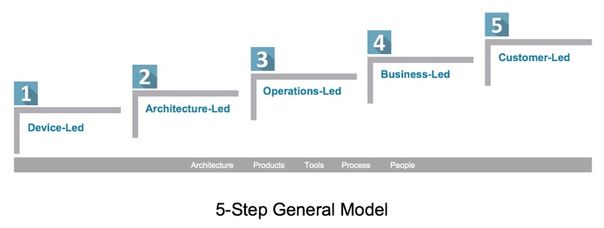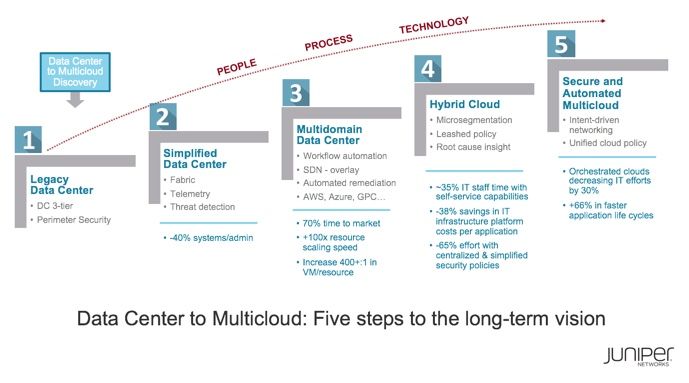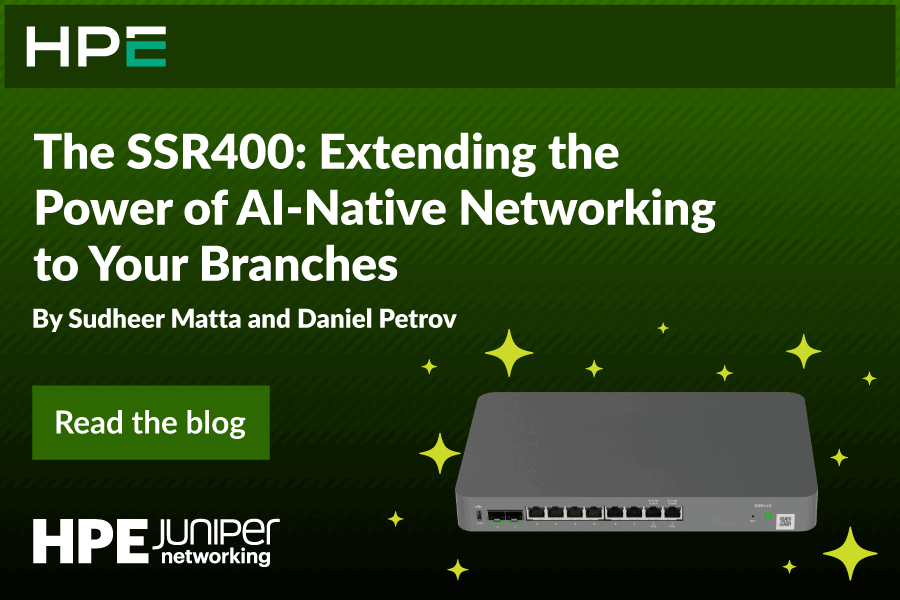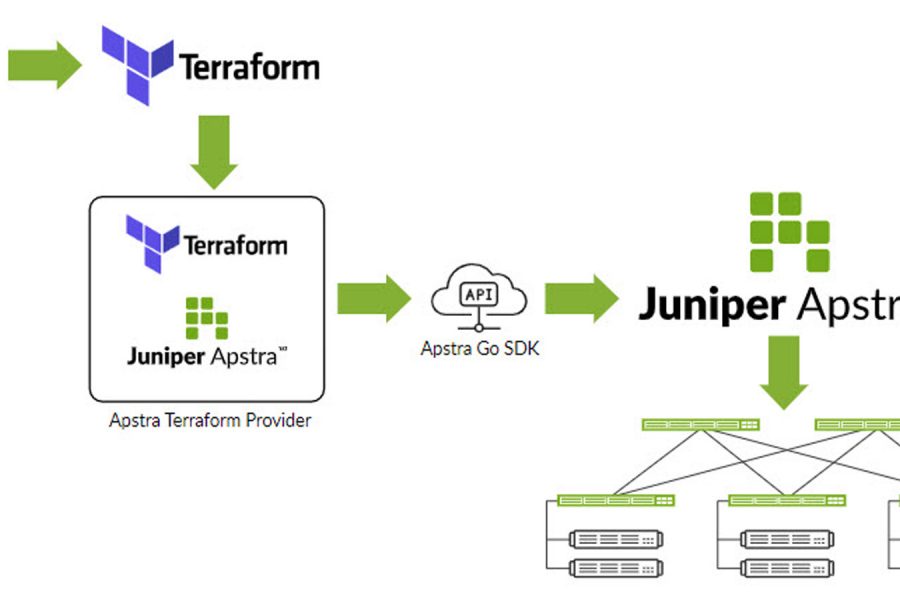It’s easy to be blinded by the pace of innovation in the IT market and the networking space in particular. And by all accounts, the pace seems to be accelerating, which actually makes it the most alarming trend to emerge in enterprise networking over the last decade.
As hype replaces hype, typically before the predecessor is even marginally adopted in the enterprise, a dangerous dynamic where we mistake technological advancement with progress has emerged. The single most important problem to solve in the enterprise networking space over the next several years is returning enterprises to actual progress.
A Widening Gap
Consider this: since 2010, networking has seen the rise of white box, SDN, NFV, overlays (for policy management), microsegmentation (distributed firewall), DevOps and intent-based networking. That’s seven paradigm-shifting technologies in about eight years. And that’s before you consider things like containers, serverless and cloud.
The harsh reality is that technology production is moving faster than technology adoption. The risk here is real. If the gap between what is deployed and where the industry’s interest lies becomes too large, we run the risk of stranding an entire generation of IT practices and the people using them. Without a graceful path forward, they may find they must relegate their future to the hands of a vendor and partner community that sees them as a captive revenue stream.
What good is new technology if you are not in a position to take advantage of it? And what must the future look like for those caught too far behind to truly benefit? Expensive support contracts and generalized solutions, that is, for anyone and yet for no one, is hardly a viable position—for enterprises or the people responsible for making it all run.
Multicloud as Context
We have asserted that the path forward will occur for most enterprises as they embrace cloud and multicloud as the future. Put simply, it has to. Expecting to take advantage of cloud without simultaneously evolving your architectures, products, tooling, processes and people is folly.
Given the scope and scale of the changes required to fully exploit multicloud architectures, it’s unreasonable to think that enterprises will bridge the gap in a single step. Such a step would be at once too big to fail and too big to succeed.
This is the driver behind Juniper Networks putting together a set of best practices, architectural recommendations and operational considerations to help customers move toward multicloud on their terms. The 5-step multicloud migration framework is designed to provide an agnostic way to think about staging the changes IT requires to adopt multicloud.

Data Center to Start
The move to multicloud will necessarily involve all places in the enterprise network: data center, campus, branch and public cloud. The promise of ubiquitous service availability and resource fungibility requires that connectivity, orchestration, visibility and security extend from the cloud (both private and public) all the way out to the on-ramps in the campus and branch.
But given the amount of attention most enterprises dedicate to the data center, it makes sense to start there. Companies that have data center expansion and refresh projects should be preparing for their immediate requirements while laying the groundwork for their multicloud future. Worst case, they are prepared for a future that hasn’t yet arrived. Best case, they pave the way to transformative change using existing budget and resources. It’s a fairly straightforward change management strategy.
Introducing the Data Center 5-step
The data center 5-step multicloud migration framework provides a generalized structure with specific technology insertions.

Simplifying the Data Center through Fabrics
Gartner has reported that 82% of all data center operations are CLI-driven. It’s fairly common that enterprises find that their data center has not evolved far beyond legacy approaches popularized years ago. Becoming more modern requires a move from device-by-device architecture and deployment and management to something more architecture-led. By adopting network fabrics—either layer 2 or layer 3, depending on application and operational needs—enterprises can simplify their data centers.
Fabrics come in different shapes and sizes. But whether it’s a layer-2 fabric using something like ICCP and 802.1br, or it’s an IP fabric using BGP and VXLAN in a common leaf-spine architecture, the key to simplifying operations is in moving beyond a device-centric architecture and management approach.
Of course, if the goal is automation, then enterprises have to also consider their telemetry strategy. The premise of automation is see something, do something. This means that every bit of state on a device needs to be exposed, ideally through real-time streaming mechanisms like gRPC.
Introducing Multiple Domains
While enterprises are introducing cloud into their practices, many do so using a lift-and-shift model. That is to say that they treat the cloud just like another data center. In that regard, it’s not really that different than building a new data center, designing the interconnects to it and then managing it as yet another entity in a sprawling infrastructure.
For enterprises to move to a multicloud future where all domains are managed as a single, cohesive set of resources brought together by common policy and control, the architecture is less about dropping an application in a cloud and more about extending the boundaries of a data center to include one or more public clouds.
Managing policy in a multidomain data center means providing a unified policy and control mechanism that stretches from bare metal workloads to VMs and containers. Additionally, the common policy and control of the overlay network can now extend from the data center into the public cloud, enabling enterprise to manage the cloud instances and VPCs on the same orchestration platform. This means enterprises have one tool for managing heterogeneous resources across the different operational environments of their data center and the public cloud.
Again, automation in this kind of environment will require visibility, which means monitoring and telemetry solutions need to now extend beyond just the on-premises infrastructure.
Hybrid and Multicloud
As enterprises become more aggressive in their multicloud architectures, we believe there will ultimately need to be a common, multidomain, multi-instance way of handling policy for both application experience and security. Policy will need to be administered not device-by-device but rather workload by workload, ideally using abstractions that allow for multi-vendor environments. These capabilities support microsegmentation to the workload level with the ability to attach assigned policies to each workload instance as it spins up or down.
There will need to be integrations into the AppDev world, with common tools like Kubernetes and OpenShift playing central roles in workload lifecycle management. This requires integration between the network and the over-the-top application environments, enabling a cohesive toolset that extends across all pools of resources, regardless of whether they are physical or virtual, or whether they are on-premises or in one or more public clouds.
Not Every Journey Starts at the Beginning
It’s worth noting that while this 5-step framework is shaped as a sequential journey, there is nothing that says enterprises cannot—or even should not—start at the end. The key to leveraging existing priorities and resources is starting wherever the projects are.
And so if an enterprise is grappling with deploying multicloud applications with Kubernetes, and they have a need to manage workloads on bare metal, in VMs and in containers, it might make sense to introduce the orchestration platform first. In some cases, we believe the path forward is to scale-out a parallel multicloud infrastructure and bring applications into the new architecture as these apps are redesigned as cloud-native. As these applications transition, the business can retire or repurpose the old infrastructure they leave behind.
More than More
Ultimately, multicloud will end up being more. More than just a set of products. More than just the data center. More than just management. More than just a single vendor.
This is why we have packaged services with our products. If the future is about getting there just as much as it is about being there, then guidance along the way will be key. While not every company will successfully transition from legacy to multicloud, success should not be dependent on people figuring it out in isolation.
Additionally, multicloud will also touch campus, branch and public cloud. So even though today is focused on data center, the mission is so much…more.

























